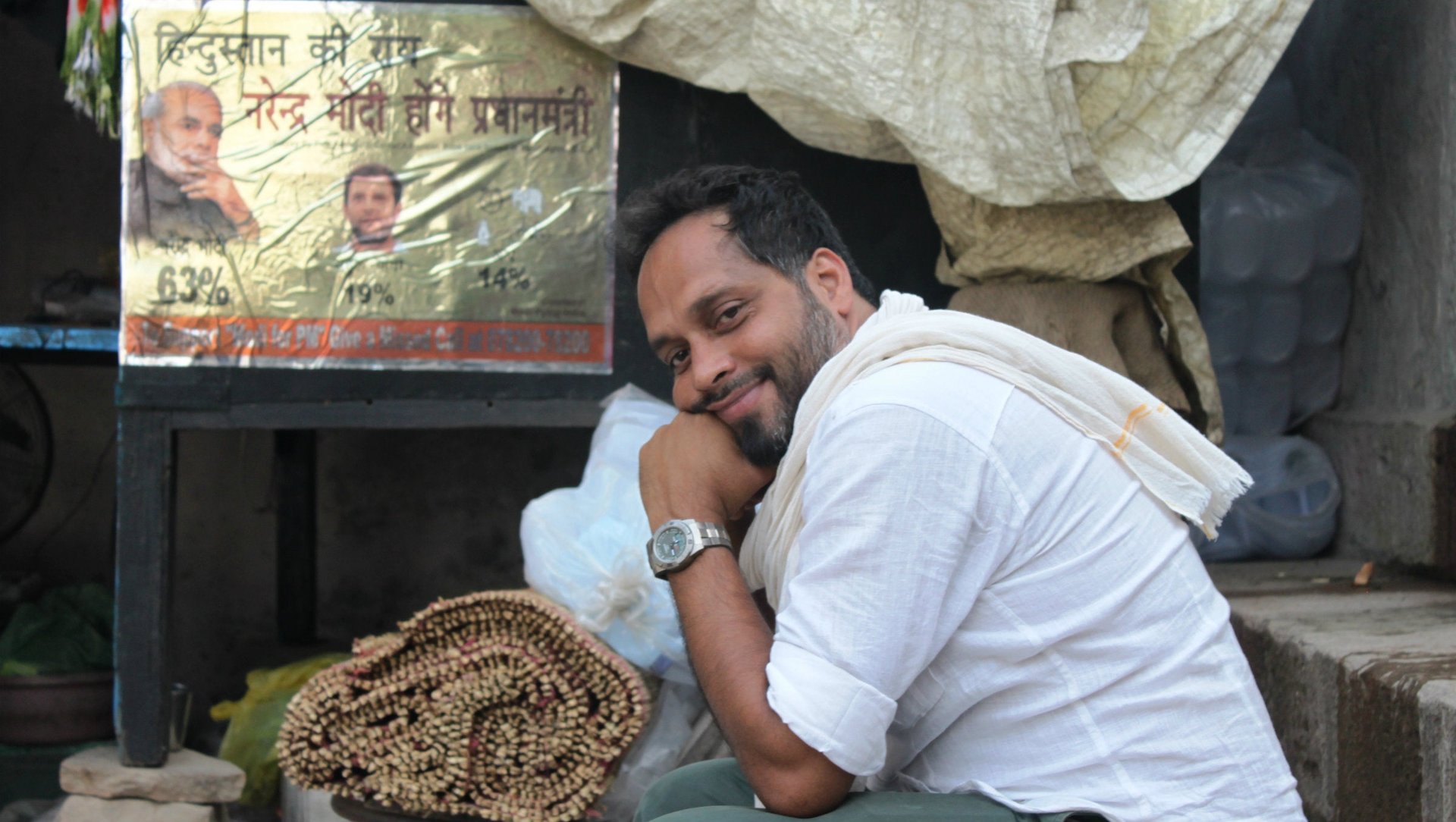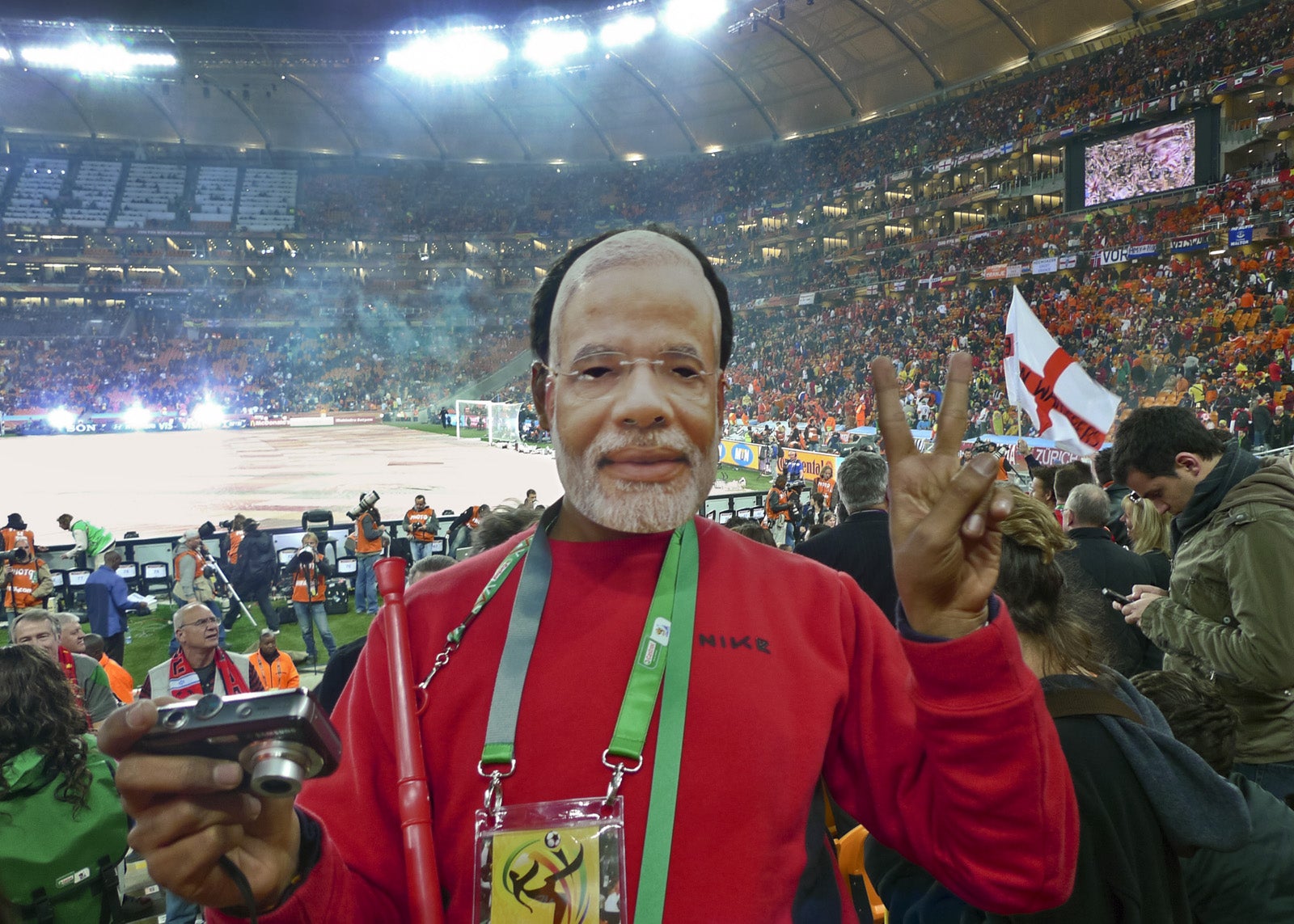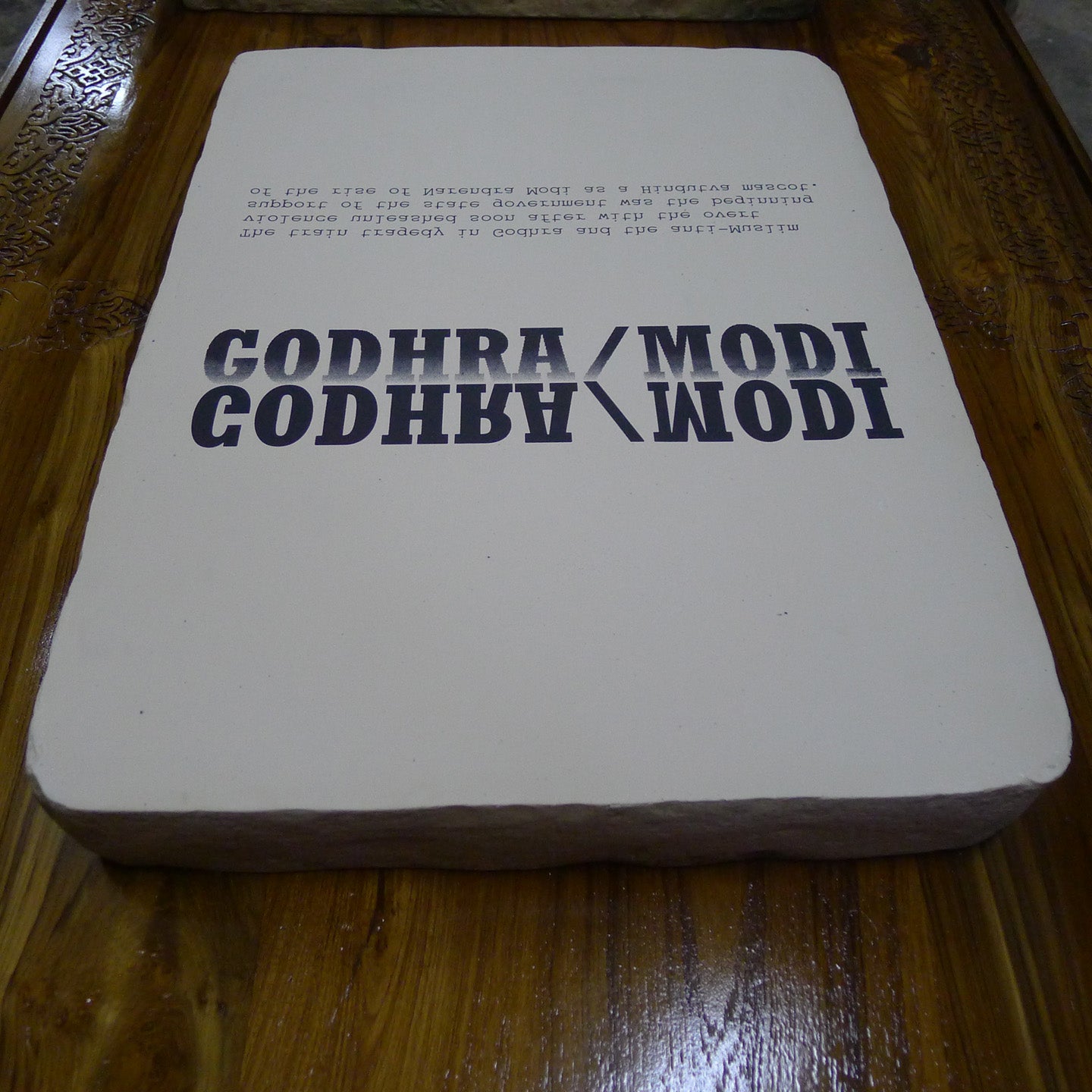The vote in Varanasi could change art and politics in India forever
In 2010, Riyas Komu had an interesting experience in Johannesburg, while waiting for Nelson Mandela to arrive before the final match of the FIFA World Cup began. Everywhere he went during the tournament, the Mumbai-born artist had made it a point to wear a `Gandhi cap’ as a symbolic reminder of Mahatma Gandhi’s political association with South Africa. That evening, as Komu waited on the edge of the pitch for the match to begin, a young man jumped in front of him wearing a Narendra Modi mask.


In 2010, Riyas Komu had an interesting experience in Johannesburg, while waiting for Nelson Mandela to arrive before the final match of the FIFA World Cup began. Everywhere he went during the tournament, the Mumbai-born artist had made it a point to wear a `Gandhi cap’ as a symbolic reminder of Mahatma Gandhi’s political association with South Africa. That evening, as Komu waited on the edge of the pitch for the match to begin, a young man jumped in front of him wearing a Narendra Modi mask.

“It was one of the most unexpected and shocking moments of my life,’’ says Komu.
About a month ago, he booked a ticket to Varanasi, the city one journeys to to seek salvation, and changed his status quote on WhatsApp. It read: “Modi, Kashi, Moksha,” (loosely translated, “Modi, Varanasi, salvation,”) a laconic statement about BJP’s prime ministerial candidate Narendra Modi’s positioning as the deliverer of economic salvation to India.
Komu was in Varanasi this month to witness and document arguably one of India’s biggest ever political fights, a contest of ideas that could define the political future of the country. After watching the mega rallies and intense campaigning of the three top contestants, he believes the result of the election for the Varanasi parliamentary constituency will have far-reaching consequences for Indian politics and even art. Edited excerpts from an interview.
What brought you to Varanasi?
I had never seen Varanasi in detail until now, except passing through the city once like a tourist. The idea to go to Varanasi was in some ways inspired by Modi’s decision to fight the election from there, and by also Mark Twain’s words. He says that “Benares (Varanasi) is older than history, older than tradition, older even than legend, and looks twice as old as all of them put together.” That is a great invitation. More than a religious city, Varanasi is a spiritual place. It summarizes what our country should be and Varanasi legitimizes that belief. In this context Modi’s decision was a real provocation to visit as a political observer.
What were you expecting here?
This is a culture that worships a river and a river is a larger reason for civilizations to flourish. The river also is a great metaphor. But the immediate invitation as I said is Modi and his talk about development and governance; a package that everybody is looking forward to. He has also chosen this historic site because of his ideology. What really attracted me is that it is a great position to take to make Varanasi a backdrop and metaphor for any politician who vouches for the Hindutva ideology. I think the city becomes a center stage for him to assert that ideology and it being a Hindutva bastion is a right setting for him. And, (Arvind) Kejriwal’s decision to fight from there sort of built the stage for us to see what kind of contests we would see in the future. As I expected it was a war happening between the secularist belief and Hindutva ideology.
You were here for more than a week. What did you see in the campaigns?
My visit here started with a young boy called Prabhat who was campaigning for AAP. I kept running into him at different places and every time he would spend some time with me, watch me document and chat. There was this warmth of friendship that I felt immediately.
Among many guys I met on the street I was taken aback by the hostility of a BJP worker. He kept asking me why I am here; do I have a vote here, etc. I asked him why he is a BJP worker and he replied: ` Mera dil to is aadmi (Modi) se juda hua hai (my heart is connected to this man).’’
Did you see a difference in this period?
Yes, I could see the tone changing, both of the BJP and the AAP. After Arvind Kejriwal’s rally on Friday the BJP workers seemed to have a bit of self doubt. At the same time, the AAP volunteers seemed to have forgotten the earlier intimidation they faced. I saw a bunch of AAP volunteers walk up to a group of BJP workers and chanting “Modi bhagauda hai (Modi is a renegade)’’; the same chant that greeted Kejriwal in Varanasi.
As a political artist?
My recent project Stone Goddess was conceptually a very conscious decision because I wanted to look at India’s history as a reference point.
These litho stones were earlier used by Ravi Varma [the late 19th century artist from Travancore who painted most of the Hindu pantheon as they appear today] to produce Gods and Goddesses. I was bringing a contemporary argument opposite Ravi Varma’s works on Indian mythology by discussing and exploring the chronology of the dark history of post independent India. Among 9 litho stones kept inside a museum-quality wooden box, the last one is on Modi and the inflammable reasons that made him so famous.

So what you are saying is that the politics in your art and your statements can be identified with…
Not identifiable. I felt that movements and shifts like this makes an artists’ argument more complex and one needs to interrogate the same more. I thought I should go back and think what political art is and what kind of political art has emerged so far from India. There are strong movements happening on the ground and it is one’s duty is to reflect on that. Movements like these change your responsibility as an artist.
Did you feel the same way when the AAP movement was playing out in Delhi?
The Delhi movement was something which surprised me because it proved that there is anger in the displaced in urban settings, a feeling that you do not have anybody to go to. That reflected in the number of seats they (AAP) got. Another thing is—a watchman, a driver, a cook and the owner of the house all voted for a party called the Aam Aadmi. That is the change that is happening in politics and this resistance needs to be observed well.
How would you then react if the BJP and the NDA were to get majority? Wouldn’t that mean that the people have rejected that argument?
The renewed economic arguments support NDA and they have a big responsibility to deliver if they get the mandate. The issue and the criticism is that the way they dictate our decisions, and we can see a self-centered approach which pushes the ordinary into the corners. But the real argument is that the social space would continue being protest-oriented; the movement might be defeated by the mandate but the fight would continue. That plot is very much there.